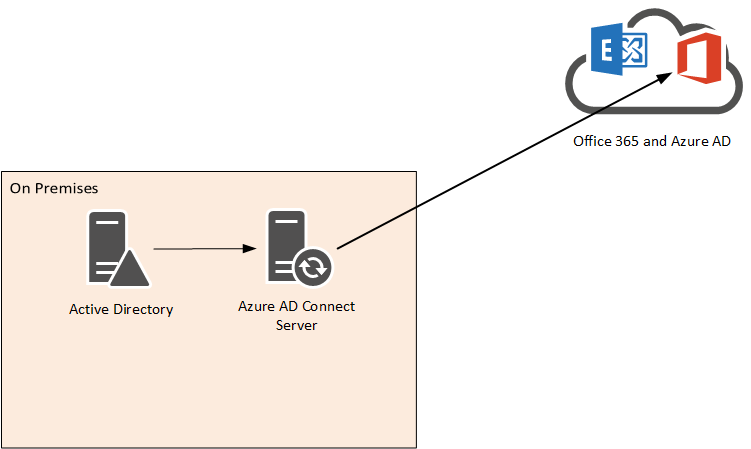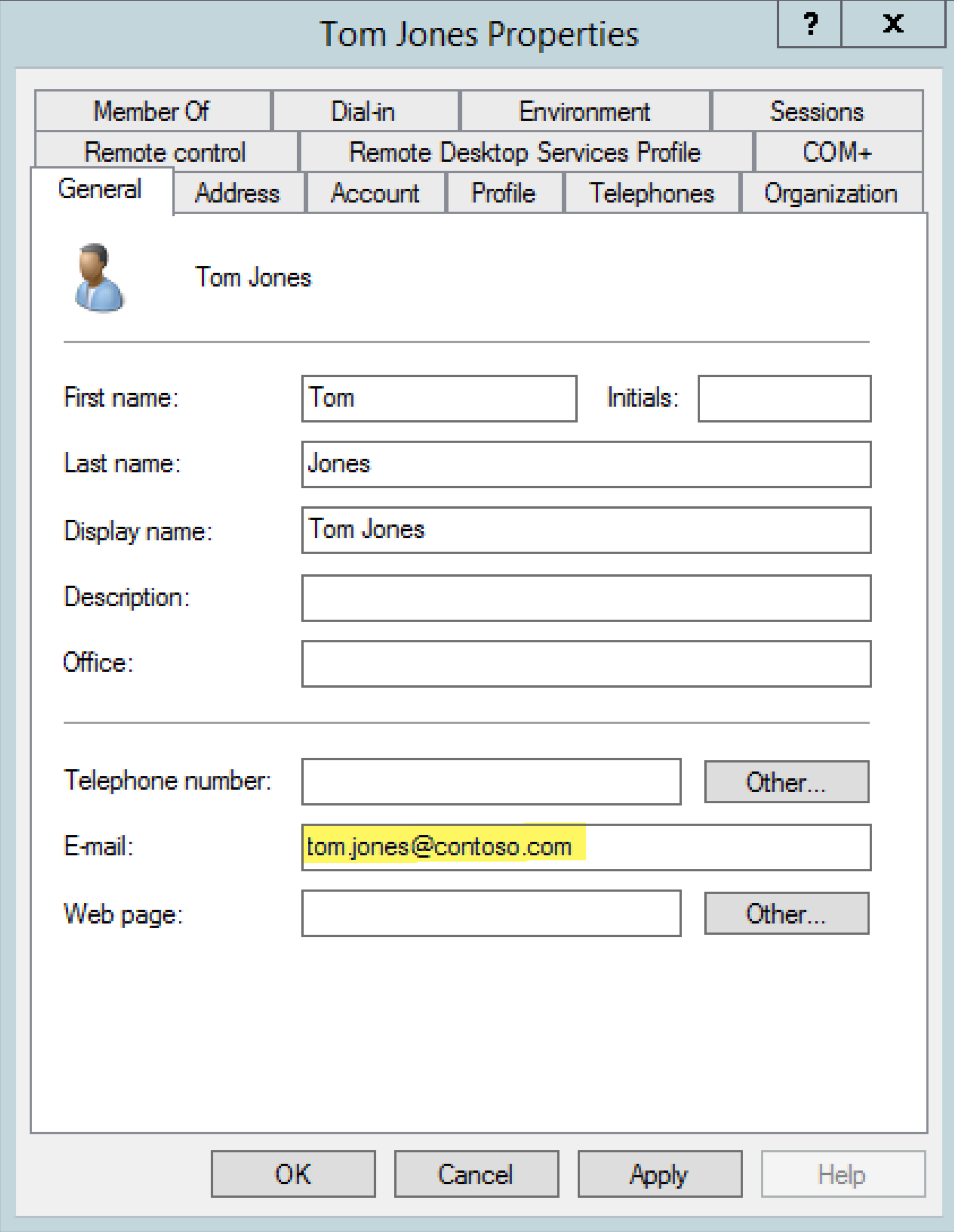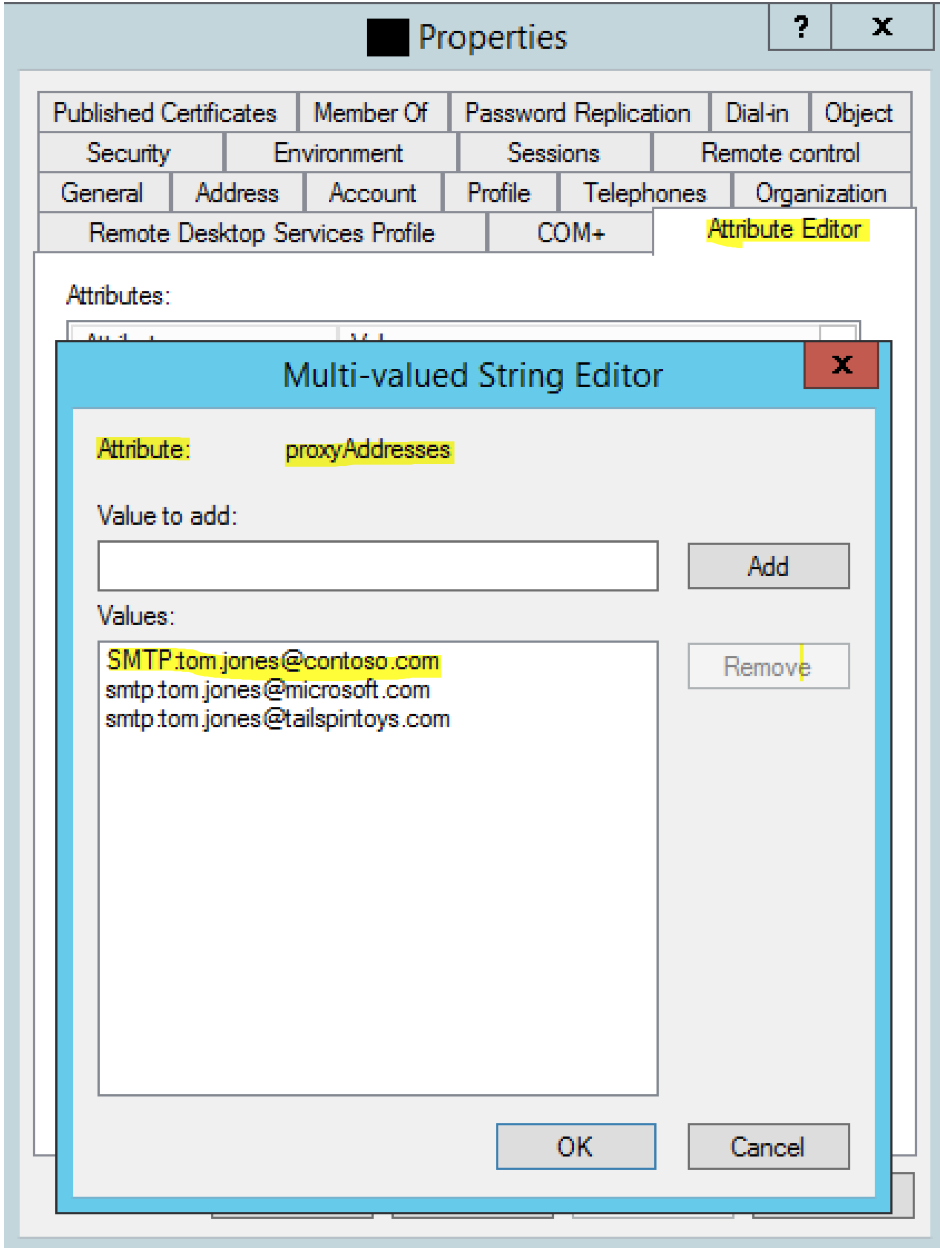First published at https://nivleshc.wordpress.com
In this blog, I will show you how to create Cloud-only mailboxes in Exchange Online (Exchange Online is the messaging part of Office 365) that are bound to objects synchronised from your on-premises Active Directory. The Cloud-only approach is different to the Hybrid approach because you do not need an Exchange server deployed in your on-premises environment.
There are a few reasons why you would want to link your Cloud-only mailboxes to your on-premises Active Directory. The most important reason is to ensure you don’t have multiple identities for the same user. Another reason is to provide the notion of single-sign-on. This can be established by using the password synchronisation feature of Azure AD Connect (this will be discussed abit later).
Ok, lets get started.
The diagram below shows what we will be doing. In a nutshell, we will replicate our on-premises Active Directory objects to Azure AD (these will be filtered so that only required objects are synchronised to Azure AD) using Azure AD Connect Server. Once in Azure AD, we will appropriately license the objects using the Office 365 Admin portal (any license bundle that contains the Exchange Online Plan 2 license is fine. Even Exchange Online Plan 2 by itself is sufficient).

Prepare your Office 365 Tenant
Once you have obtained your Office 365 tenant, add and verify the domain you will be using for your email addresses (for instance, if your email address will be tom.jones@contoso.com, then add contoso.com in Office 365 Admin Center under Setup\Domains). You will be provided with a TXT entry that you will need to use to create a DNS entry under the domain, to prove ownership.
Once you have successfully verified the domain ownership, you will be provided with the MX entry value for the domain. This must be used to create an MX entry DNS record for the domain so that all emails are delivered to Office 365.
Prepare your on-premises Active Directory
You must check to ensure your on-premises Active Directory does not contain any objects that are incompatible with Azure AD. To perform this check, run idFix in your environment.
Note of advice - idFix, by default runs across all your Active Directory objects. You do not have to fix objects that you won't be synchronising to Azure AD
It is highly recommended that your on-premise Active Directory user objects have their userprincipalname (upn) matched to their primary email address. This will remove any confusion that users might face when accessing the Office 365 services via a web browser as Office 365 login pages refer to username as “email address”.
Next, ensure that the E-mail field for all users in Active Directory contains the UPN for the user.

Deploy and Configure Azure AD Connect Server
Ensure all the prerequisites have been met, as outlined at https://docs.microsoft.com/en-us/azure/active-directory/connect/active-directory-aadconnect-prerequisites
Next, follow the article at https://docs.microsoft.com/en-us/azure/active-directory/connect/active-directory-aadconnect-select-installation to deploy and configure your Azure AD Connect (AADC) Server.
During the configuration of AADC, you will be asked to specify which on-premise Active Directory objects should be synchronised to Azure AD. Instead of synchronising all your on-premise Active Directory objects, choose the Organisational Unit that contains all the users, groups and contacts you want to synchronise to Azure AD.
Choose the Password Synchronisation option while installing the AADC server. This will synchronise your on-premise password hashes to Azure AD, enabling users to use their on-premises credentials to access Office 365 services
At this stage, your AADC server would have already done an initial run, which would have created objects in Azure AD. These are visible using the Office 365 Admin Center.
After the initial sync, AADC runs an automatic synchronisation every 30 minutes to Azure AD
Provision Mailboxes
Now that everything has been done, open Office 365 Admin Center. Under Users\Active Users you will see all the on-premise users that have been synchronised.
Click on each of the users and then in the next screen click Edit beside Product licenses and select the location of the user and also the combination of license options you want to assign the user. Ensure you select at least Exchange Online (Plan 2) as this is needed to provision a user mailbox. Click on Save.
As soon as you assign the Exchange Online (Plan 2) license, the mailbox provisioning starts. This shouldn’t take more than 10 minutes to finish. You can check the progress by clicking the user in Office 365 Admin Center and then Mail Settings at the bottom of the screen. Once the mailbox has been successfully provisioned, the We are preparing a mailbox for this user message will disappear and instead details about the user mailbox will be shown.
Once the mailbox has been provisioned, open the Exchange Admin Center and then click on recipients from the left menu. In the right hand side screen, click mailboxes. This will show you details about the mailboxes that have been provisioned so far. The newly created user mailbox should be listed there as well.
Thats it folks! You have successfully created an Exchange Online mailbox that is attached to your on-premises Active Directory user object.
Any changes to the Office 365 object (display name etc) will have to be done via the on-premises Active Directory. These changes will be synchronised to Azure AD every 30 minutes and will be reflected in the Exchange Online mailbox
If you try to modify any of the attributes via the Office 365 or Exchange Online Admin Center, you will receive the following error The action '<cmdlet>', '<property>', can't be performed on the object '<name>' because the object is being synchronized from your on-premises organisation.
Some Additional Information
Please note that the following is not supported by Microsoft.
There are times when you need to have additional email aliases attached to a user mailbox. To do this, follow the below steps
- Open Active Directory Users and Computers in your on-premises Active Directory
- In the top menu, click View and then select Advanced Features
- Navigate to the user object that you want to add additional email aliases to and double click to open its settings
- From the tabs click on Attribute Editor
- Under Attributes locate proxyAddresses and click on Edit (or double click) to open it
- In the values field, first enter the current email address, prefixed with SMTP: (ensure the smtp is in upper case).
- Then add all the email aliases that you want to assign to this user. Ensure each email alias is prefixed with smtp: The email domain for the aliases has to be a domain that is already added and verified in Office 365 Admin Center.
- If you need to change the reply-to (primary smtp) address for the user then remove the value that currently has the upper case SMTP: assigned to it and then re-add it, however prefix it with a lower case smtp:. Then remove the alias that you want to assign as the reply-to (primary smtp) and re-add it, however prefix it with an upper case SMTP:

I hope the blog helps out those who might be wanting to use the Cloud Only instead of the Hybrid deployment approach to Office 365.
Have a great day 😉
